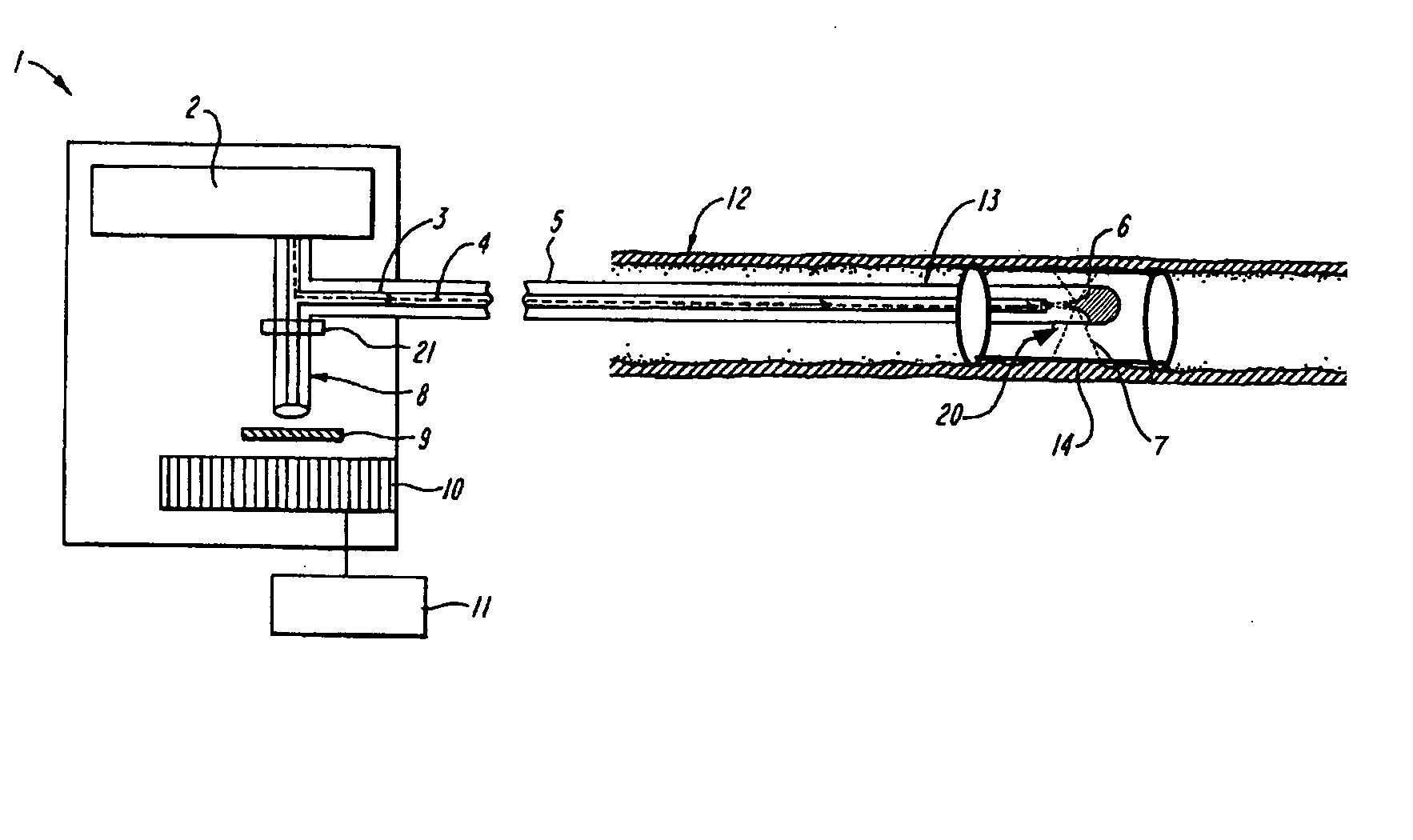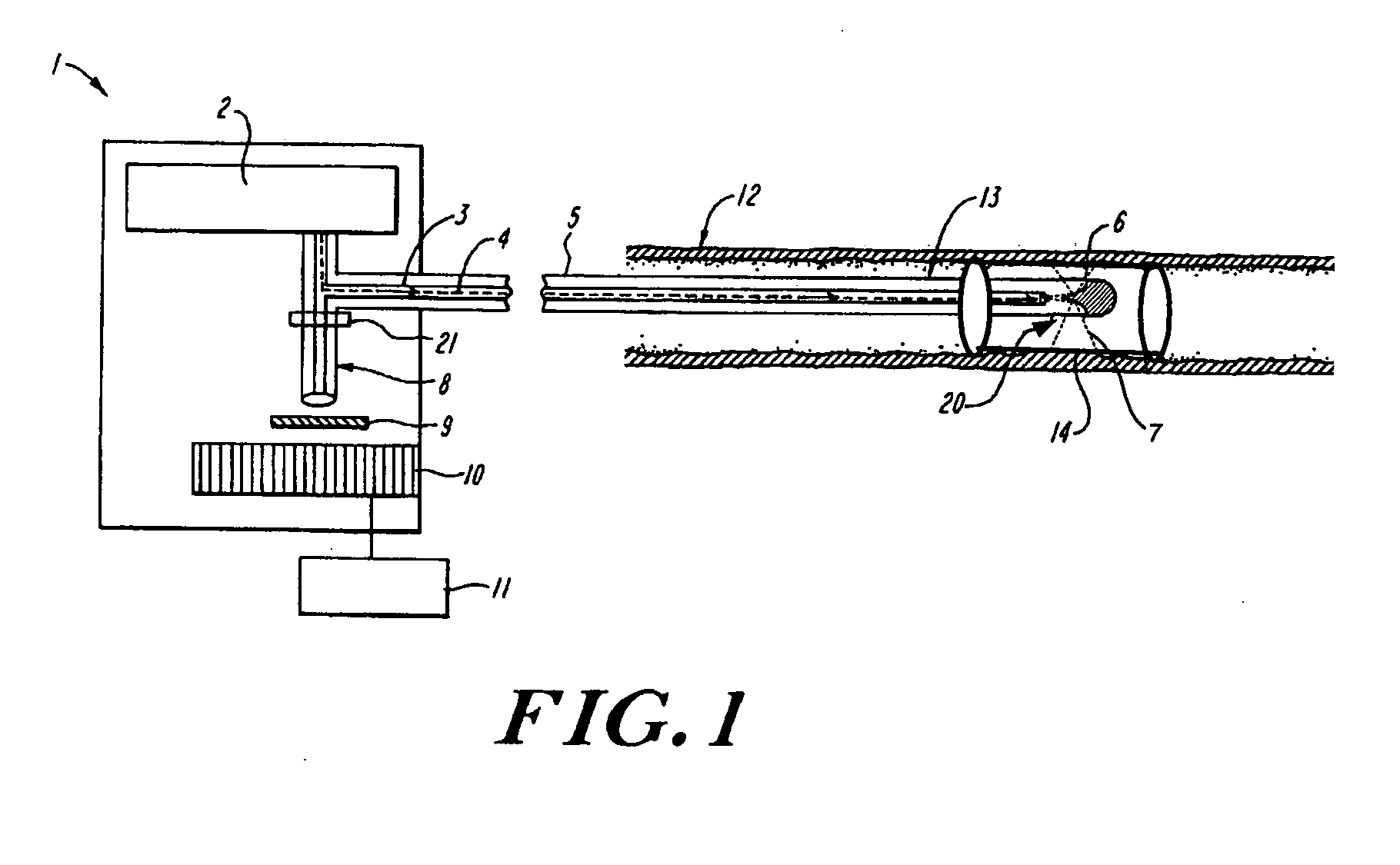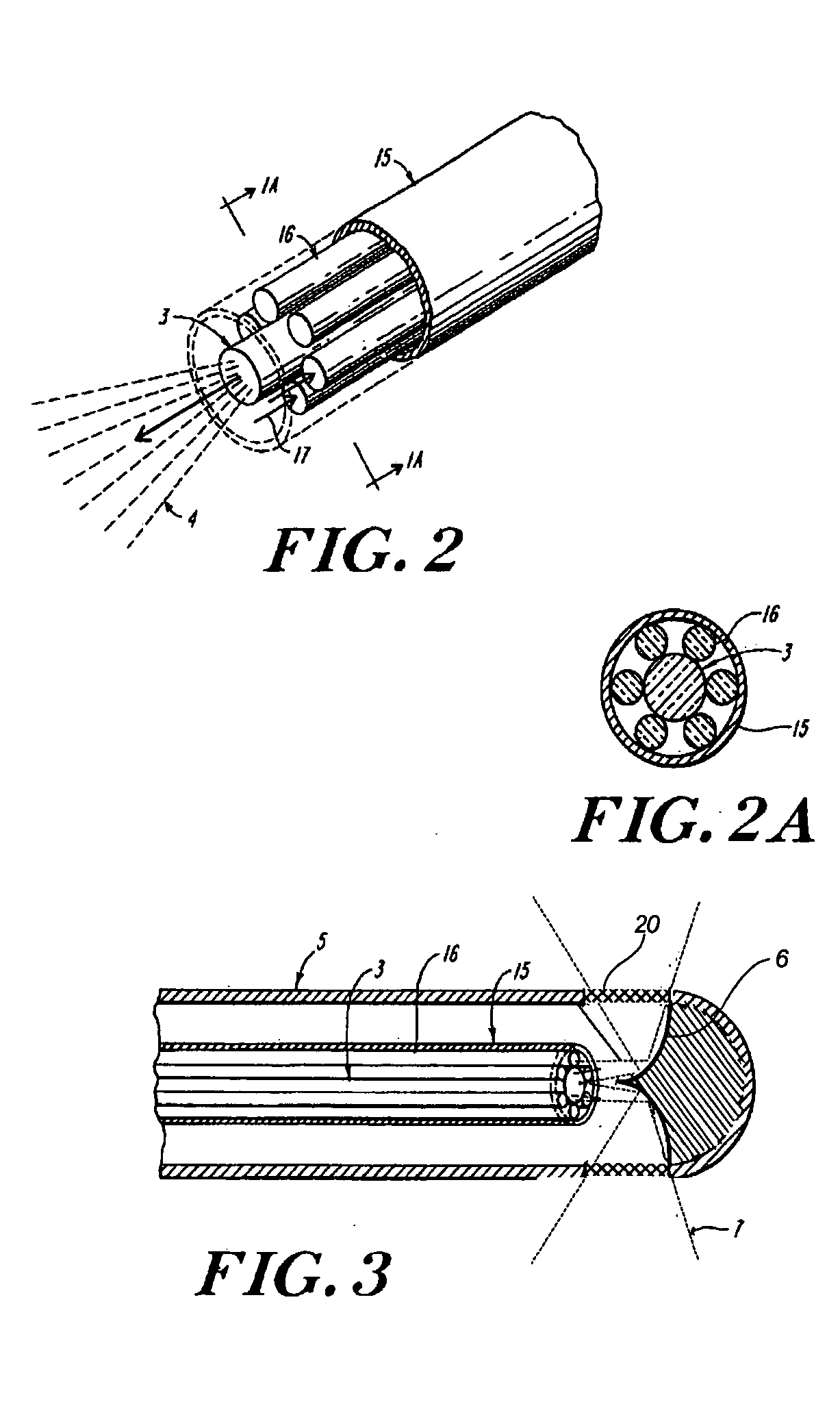Raman spectroscopy for monitoring drug-eluting medical devices
a technology of raman spectroscopy and medical devices, applied in the field oframan spectroscopy, can solve the problems of recurrent chest pain in many patients, large health care costs, and drawbacks
- Summary
- Abstract
- Description
- Claims
- Application Information
AI Technical Summary
Benefits of technology
Problems solved by technology
Method used
Image
Examples
Embodiment Construction
[0023] The invention is directed to in situ monitoring of drug-eluting medical devices such as stents inserted into a lumen of a subject (e.g., a blood vessel), using low-resolution Raman spectroscopy to monitor the extent and / or rate of a drug released prior to, during, and / or after stenting of an atherosclerotic lesion, for example. Thus, evaluation of a packaged and / or an inserted and activated stent is performed to determine drug-release characteristics that can be expected from that stent, and to verify adequate release of the drug at a time when the stent can be easily replaced. Although the invention is described in terms of stents, it will be obvious to one skilled in the art that the invention can be used with other drug-eluting devices, and in other fields, such as for detection of other blood-borne drugs and / or components within a vessel or body cavity, or detection of other drugs absorbed by a lumen wall such as a wall of a blood vessel.
[0024] General background informa...
PUM
 Login to View More
Login to View More Abstract
Description
Claims
Application Information
 Login to View More
Login to View More - R&D
- Intellectual Property
- Life Sciences
- Materials
- Tech Scout
- Unparalleled Data Quality
- Higher Quality Content
- 60% Fewer Hallucinations
Browse by: Latest US Patents, China's latest patents, Technical Efficacy Thesaurus, Application Domain, Technology Topic, Popular Technical Reports.
© 2025 PatSnap. All rights reserved.Legal|Privacy policy|Modern Slavery Act Transparency Statement|Sitemap|About US| Contact US: help@patsnap.com



